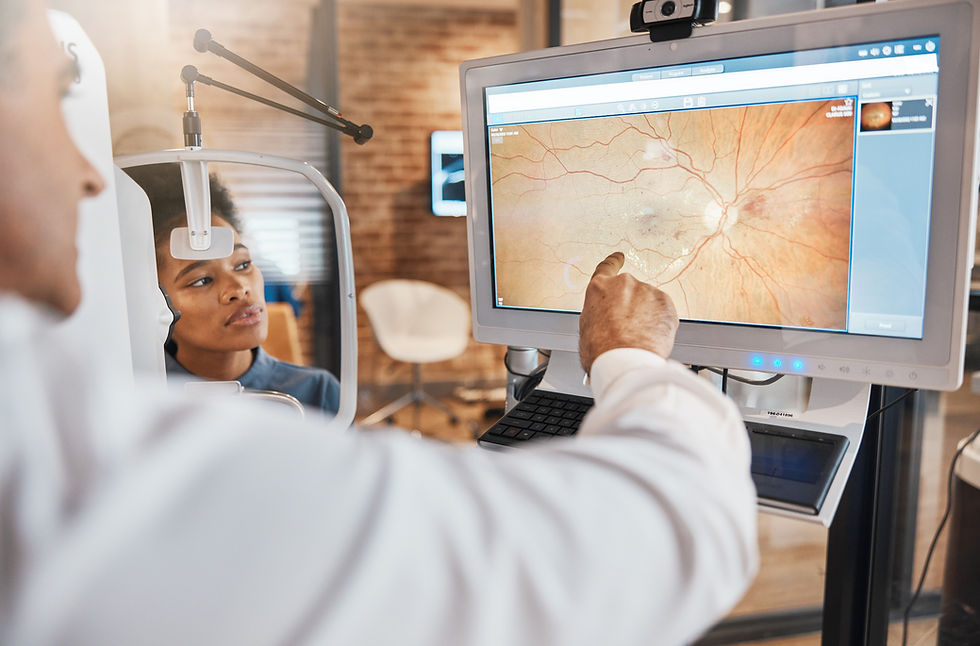To LASIK or not to LASIK? That is the question.
- by Dr. Z Aleksic

- Jun 14, 2019
- 3 min read
Is your poor vision affecting the quality of your life?
Is your vision a hindrance to many daily tasks?
If you answered yes to these questions, you have probably considered LASIK surgery as a solution to these problems, as LASIK has certainly become a commonly considered surgery for anyone with impaired vision. LASIK involves reshaping the cornea of the eye, the outermost layer, to adjust its optical power. In this way, it corrects farsightedness and nearsightedness.
However, in my experience as an ophthalmologist, I have seen that many people are misconceived about LASIK surgery and find themselves with a few misinformed assumptions about the procedure and the other available alternatives. Here are a few corrections of the most common misunderstandings I have encountered about LASIK surgery.

1. Not everyone is a candidate.
Many patients arrive at my door prepared to hear all about the prospect of them undergoing LASIK and becoming spectacle-free. Whilst most times this is possible, not everyone is a candidate for LASIK as this depends on the size of your cornea. In your consultation your ophthalmologist will measure whether or not you have enough tissue to cater for your prescription. Basically, if your cornea is too thin for your required prescription, you are not a candidate for LASIK. However, one must not feel despondent as there are other avenues which can be looked at for your vision correction.
2. There are alternatives to LASIK, such as Photorefractive Keratectomy (PRK).
PRK is perfect with those who have insufficiently sized corneas. It is done with a brush and medication in order to remove the superficial cells on the eye. Thereafter, a contact lens is used to allow the cells to grow over for 7 days. There is also a new, break-through PRK technique available at our practice which is a bladeless, non-touch technique which is all done with a laser.
3. LASIK candidates are not always ready for surgery once they reach the age of 21.
It is not age that is the most important factor, but rather, it is crucial that LASIK candidates are ready to look at having this procedure only once their eyes are stable for one year, at whatever age that might be.
4. LASIK surgery does not always mean that patients will be spectacle-free forever.
What many people do not realise is that LASIK and PRK correct distance, but when age-related reading problems arise around the age of 45, one might still need spectacles. This has nothing to do with the laser surgery they may have had previously.
5. LASIK and PRK correct astigmatism.
They are correctable usually up to around a -6 astigmatism.
6. Yes, you can fly.
Many patients confuse this with retinal surgery which is affected by altitudes. With LASIK or PRK, there is nothing that limits you from getting into an aeroplane, but your ophthalmologist will at least want to see you twice before you leave just to see that you are not running into any problems.
7. There is very little which prohibits one from having LASIK or PRK.
That being said, there are some systemic conditions, such as aggressive Arthritis, which can potentially lead to an unpredictable healing response. In those rare cases one would want to stay away from LASIK in order to maintain a healthy, stable eye.
8. Laser surgery is very quick.
It takes approximately 1.5 seconds per unit
If you are for example – 4 D myopic, to correct this amount of myopia will take +- 6-7 seconds per eye.
The whole procedure with preoperative and postoperative explanations averages about a 15-20 min procedure for both eyes ( for the above mentioned laser correction, laser exposure time 6 sec only!!!)
9. No, you cannot smell your tissue burning in the surgery.
This is only the smell of the fluoride gas that is creating an evaporation of tissue, but the temperature of your tissue only changes for only a few degrees.
10. Laser is instant.
About 20-25 minutes after the procedure you will be able to see well, but you will have shields to protect you from bumping, scratching or rubbing your eyes. You will wear these for only one night. The next day you can shower as usual, even getting your eyes wet, just as long as you do not rub them.




Comments